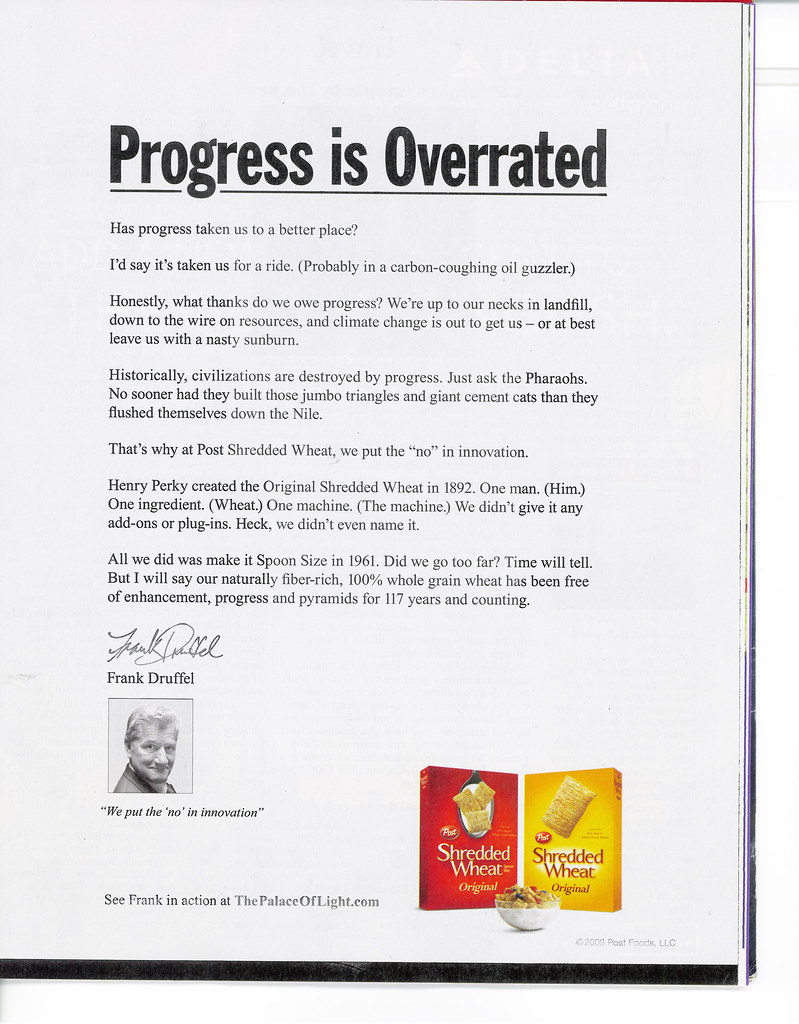Here’s an ad that I saw in the May 1, 2009 issue of The Week magazine. It’s from Post advertising their Shredded Wheat cereal with creative from Ogilvy:
Personally, I love it. Just as wrong-headed financial management is being righted in this economy, we can reclaim the oft-maligned word innovation to mean actual progress.
So where does real progress exist? It’s in between the innovation hucksters and those too reluctant to strive to make things better. I think Barry Curewitz, managing partner of Whole-Brain Brand Expansion, advocates for a rational, balanced approach to developing new products in his article, “Innovate with Balance.” due out in the May/June 2009 issue of Marketing Management magazine.
In summary, Barry argues two major points:
- His research shows companies are chasing too many strategies in a time when there’s too few resources, with identifiable shortcomings in the operations of otherwise good product ideas. In other words, in this time of tight budgets, invest wisely by supporting only what has potential, and then invest with real commitment. His examples of market performance for common household products demonstrates the point clearly.
- Companies can benefit by balancing structured, analytical methods with less structured, creative methods. We need the former to execute development plans, and we need the latter to create unique products, e.g. collaboration between MBA’s and creatives; coordination of innovation methods with Stage Gate methods.





 Now that’s a headline that made me stop and think…
Now that’s a headline that made me stop and think… For Sarah McLachlan’s
For Sarah McLachlan’s  I think frames that appeal to good old fashioned business drivers will be more effective, such as:
I think frames that appeal to good old fashioned business drivers will be more effective, such as: